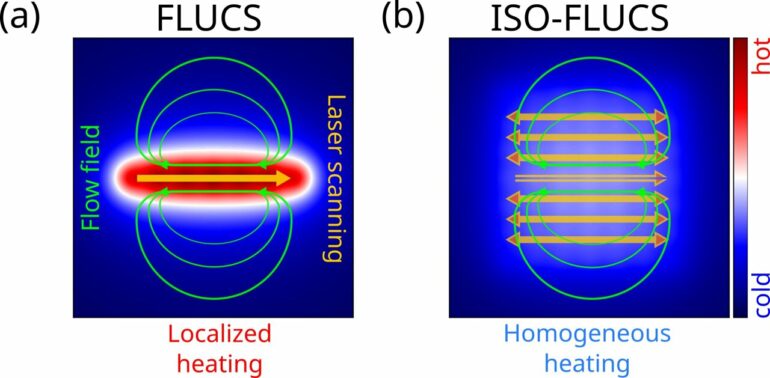Researchers at the University of Twente have developed a theoretical method for designing fluidic networks that has direct applications for scientists and engineers.
The optimal diameter of the channels within a branched network is determined using charts, to keep energy loss within the network to a minimum. Even when practical constraints such as standard channel sizes or tolerances mean that channel diameters are not optimal, energy loss can still be reduced or at least quantified.
The results are applicable to a wide range of systems, from optimal heat distribution in thermal storage and the scaling up of 3D printers, to lubrication systems for bearings and gears, CO2 capture and artificial lung design. The study is the work of Jan Siemen Smink, Kees Venner, Claas Willem Visser and Rob Hagmeijer of the Faculty of Engineering Technology and has been published in the Journal of Fluid Mechanics.
“The lung is one example of a fluidic network that branches out. Look closely at the lungs and you will see a structure made up of tiny channels through which air is breathed in and out. The trachea divides into smaller channels, which in turn subdivide again and again. This brings the air into contact with a large surface area, allowing the exchange of oxygen and CO2 to take place,” Smink explains.
“In the human body and elsewhere in nature, we find networks like these in the cardiovascular system and the kidneys, or in trees for example—from their roots to the veins on a leaf. These natural networks are very good at limiting the use of energy, materials and space, and are therefore highly efficient.”
Branched fluidic networks
The majority of scientific studies in this field focus on the description of natural systems and are hardly applicable to the design of new technological systems. However, branched fluidic networks are increasingly being seen as a source of essential insights into the use of existing and new technology. Examples include pipeline systems (e.g. for gas and water supply), process engineering in factories, 3D printing and microfluidic chips (e.g. for laboratory research into biomedical applications).
“The design and optimization of these fluid transport networks presents many challenges. What kind of geometry can be considered optimal? For Newtonian fluids, such as water, this has already been the subject of extensive research. But for non-Newtonian fluids, which exhibit more complicated behavior, optimization is far more difficult.”
“For some characteristic forms of non-Newtonian behavior, this problem has now been solved: liquids that sometimes only start flowing under a certain stress, for example, or that become more or less viscous once they are in motion. These include blood, inks for 3D printers, corn flour, toothpaste, liquid plastic and dredged mud. How do you go about determining the optimal network geometry for such fluids? Our research has now established a design method in such cases.”
More information:
J.S. Smink et al, Engineering of branched fluidic networks that minimise energy dissipation, Journal of Fluid Mechanics (2023). DOI: 10.1017/jfm.2023.433
Provided by
University of Twente
Citation:
Minimal energy loss thanks to smart use of branched fluidic networks (2023, July 21)



